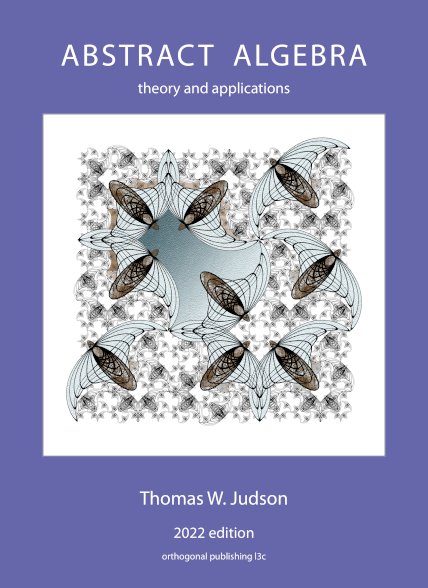Section 1.2 Sets and Equivalence Relations
Subsection Set Theory
A set is a well-defined collection of objects; that is, it is defined in such a manner that we can determine for any given object
A set is usually specified either by listing all of its elements inside a pair of braces or by stating the property that determines whether or not an object
for a set containing elements
if each
We can find various relations between sets as well as perform operations on sets. A set
and
Trivially, every set is a subset of itself. A set
It is convenient to have a set with no elements in it. This set is called the empty set and is denoted by
To construct new sets out of old sets, we can perform certain operations: the union
We can consider the union and the intersection of more than two sets. In this case we write
and
for the union and intersection, respectively, of the sets
When two sets have no elements in common, they are said to be disjoint; for example, if
Sometimes we will work within one fixed set
Proposition 1.2.
Proof.
We will prove (1) and (3) and leave the remaining results to be proven in the exercises.
(1) Observe that
and
Also,
(3) For sets
A similar argument proves that
Theorem 1.3. De Morgan’s Laws.
Proof.
(1) If
To show the reverse inclusion, suppose that
The proof of (2) is left as an exercise.
Example 1.4.
Subsection Cartesian Products and Mappings
Given sets
Example 1.5.
We define the Cartesian product of
If
Subsets of
is called the range or image of
Example 1.6.
Suppose
Given a function
Consider the relation
If
Example 1.8.
Let
Given two functions, we can construct a new function by using the range of the first function as the domain of the second function. Let
Example 1.10.
Consider the functions
Example 1.11.
Example 1.12.
Example 1.13.
Example 1.14.
Theorem 1.15.
Proof.
We will prove (1) and (3). Part (2) is left as an exercise. Part (4) follows directly from (2) and (3).
(1) We must show that
For
(3) Assume that
If
Example 1.16.
Example 1.17.
Example 1.18.
Suppose that
hence, the inverse map is given by
It is easy to check that
Not every map has an inverse. If we consider the map
given by the matrix
then an inverse map would have to be of the form
and
Example 1.19.
Theorem 1.20.
A mapping is invertible if and only if it is both one-to-one and onto.
Proof.
Suppose first that
Conversely, let
Subsection Equivalence Relations and Partitions
A fundamental notion in mathematics is that of equality. We can generalize equality with equivalence relations and equivalence classes. An equivalence relation on a set
Given an equivalence relation
Example 1.21.
Example 1.22.
Suppose that
Example 1.23.
Example 1.24.
Let
Then
the relation is transitive. Two matrices that are equivalent in this manner are said to be similar.
A partition
Theorem 1.25.
Given an equivalence relation
Proof.
Suppose there exists an equivalence relation
Conversely, suppose that
Corollary 1.26.
Two equivalence classes of an equivalence relation are either disjoint or equal.
Let us examine some of the partitions given by the equivalence classes in the last set of examples.
Example 1.27.
In the equivalence relation in Example 1.21, two pairs of integers,
Example 1.28.
In the equivalence relation in Example 1.22, two functions
Example 1.29.
We defined an equivalence class on
Example 1.30.
Let
If we consider the equivalence relation established by the integers modulo
The integers modulo

